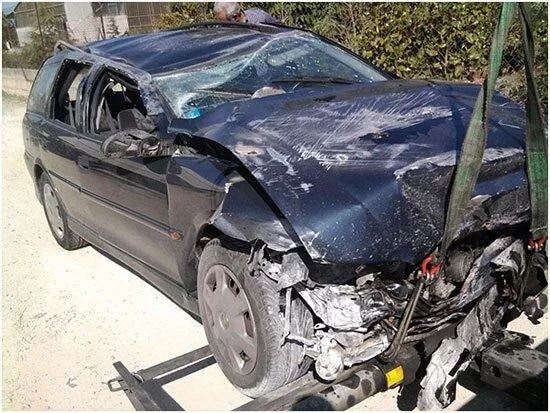It is widely recognized that motor vehicle accidents are a leading cause of most reported traumatic brain injuries (TBIs). This type of injury happens when any force breaches or cracks the skull; a part of the body that is especially vulnerable during a motor vehicle accident.
Within this context, it is important to understand the mechanism of these injuries. Car crash-related TBI usually happens when an occupant’s head hits a solid object in the vehicle, such as the dashboard, steering wheel or windshield. In many – but not all – cases, there is visible evidence of the head trauma, such as an open wound, immediate bruising, bleeding or swelling.
However, a lack of visible trauma does not necessarily mean that someone hasn’t sustained a TBI. This is because the sheer force exerted in a crash can cause the brain to collide with the internal hard bone of the skull, resulting in bruising of or bleeding in the brain.
Blunt trauma can also cause head injuries in motor vehicle accidents. As we previously noted, this can happen when an occupant’s head hits a fixed object within the vehicle, causing an open wound. This can also happen when someone is ejected from the vehicle, or when the roof collapses in a rollover accident. Upon impact the brain in the opposite area pulls away from the skull, resulting in injuries there.
Crashworthiness in TBI cases
Whenever someone sustains any serious or catastrophic injury such as TBI in a motor vehicle accident, several factors should be assessed. This is because external factors can sometimes result in exacerbated injuries.
One of the chief factors that should be taken into account is crashworthiness – or the vehicle’s ability to withstand the forces exerted in an accident and protect the passengers on impact. If you or a loved one sustained a TBI in a motor vehicle accident, an experienced personal injury attorney can determine whether the vehicle’s crashworthiness is a significant factor in your case.
If it is, the focus of the lawsuit shifts from who was at fault in the accident and how it happened, to whether or not the vehicle afforded you the protection that it should have under the circumstances. In accordance with a principle of law called the crash worthiness doctrine, the company that made the vehicle can be liable; but only if design defects cause further damage in an accident, apart from damage directly attributed to the collision.
You should also be aware that in New York, there is a considerable burden of proof in crash worthiness cases. First, the plaintiff must prove that design defect heightened the severity of the injury or injuries sustained. The plaintiff must also prove that a different, practical and safer design could have been implemented. Finally, the plaintiff must present sufficient evidence that and that the injury/injuries sustained because of the design defect were worse than they would have been if the safer design had been implemented.
For a free legal consultation, call (212) 732-2929
Automobile and part defects in TBI cases
Another possibility that should be taken into consideration is whether an automotive or parts defect caused or contributed to the accident that resulted in a TBI.
Because of the threat posed to the general public, preexisting imperfections in motor vehicles that cause them to speed up without warning, or stall suddenly tend to receive a lot of publicity.
Some other examples of automotive defects or defective parts are:
- Faulty seatbelts
- Faulty airbags
- Faulty seatbelts,
- Flawed child safety seats
- Faulty tires
- Incorrect window glazing,
- The use of laminated versus tempered glass on windshields and/or windows
- Faulty door latches,
- Poorly or incorrectly designed roofs that can cave in when a car flips over
- Vehicle deficiencies that lead to rollovers
Again, the burden of proof is on the plaintiff. As the plaintiff you (or more accurately, your lawyer) must prove that the automotive defect caused or contributed to the accident. To meet this burden, there must be sufficient proof that:
- A deficiency, weakness or imperfection existed in the vehicle involved in the accident.
- The defect caused the vehicle to be “unreasonably dangerous”
For the manufacturer to be found legally responsible, the plaintiff must also establish that the defect existed while the vehicle or vehicle part was being made or installed under its control and did not surface at a later point in time when someone else was responsible for it.
To secure compensation, your attorney must also present evidence showing that you were injured, the extent of your injury or injuries, and the emotional and financial toll your injury or injuries took on you and your family.
The importance of hiring a knowledgeable personal injury lawyer
No one likes to think about something bad happening to himself or herself or someone they love. But if you or a loved one sustained a TBI in a motor vehicle accident, you need a qualified personal injury attorney to ensure that those who are responsible are held fully accountable and to help you secure the compensation you deserve.
Depending on the circumstances of your case, we can help you secure reparations for damages including but not limited to medical costs, property damage, lost wages and pain and suffering. Because we fully understand the devastating effects of TBI, we will also seek punitive damages – which are designed to punish the defendant for their reckless behavior – when applicable.
Because there are specific deadlines for initiating legal action, it is critical that you don’t waste any time. Contact us to schedule a free assessment of your motor vehicle accident/TBI case today.
Whether you’re dealing with injuries from a car accident, construction accidents, or a wrongful death case, our attorneys are here to provide compassionate support.
Call or text (212) 732-2929 or complete a Free Case Evaluation form






